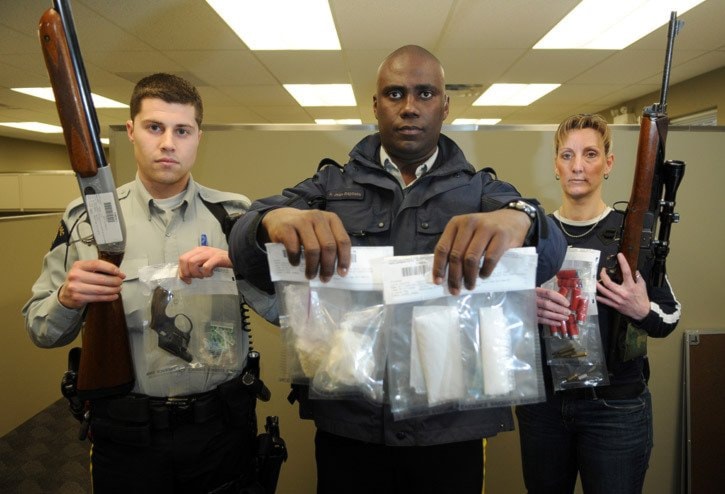Targeting crime hot spots in Chilliwack - and beefing up police patrols in those areas - is the latest RCMP strategy to maximize its limited resources to push back against crime in this city.
But it’s an “intelligence-driven” strategy that requires the eyes and ears of law-abiding citizens to report crimes-in-progress and any suspicious activity in their neighbourhoods.
“We need the public to really take a role in crime-fighting in the Chilliwack area,” said Staff Sgt. Marty Blais, who heads up the teams of plainclothes and uniformed officers who will patrol the hot spots.
“We want (the public) … to identify what’s happening out there (and) report it to the police as soon as it’s observed,” he said.
The police half of the partnership works this way:
A crime analyst will identify where the crimes are happening, so police can focus their patrols in those areas, and develop 14-day trends so the officers can be on the watch for criminal activity in those areas where the criminals might move next.
But key to the success of the strategy is the other half: public participation.
“It’s the ultimate way of doing policing in the Chilliwack area,” Blais said, about the police/public partnership.
He urged residents to look beyond their own front doors and “take charge of your neighbourhoods” by reporting suspicious activity to the police.
Like seeing people knocking on doors in the neighbourhood, which criminals often do to see if anyone is home.
“We need people to report these individuals to us, and we will send police vehicles (to investigate),” Blais said.
Chilliwack RCMP recently discovered $12,500 worth of drugs and a number of firearms in a home as a result of the new strategy. Two people were arrested, and the investigation continues.
Staff Sgt. Suki Manj, commander of the plainclothes unit of the Upper Fraser Valley Regional Detachment, said the idea behind the strategy is to make more efficient use of limited police resources.
Instead of police officers driving around looking for crime, he said based on the crime analyst’s data, plainclothes and uniformed officers will be sent out to patrol the crime hot spots “where they know it’s happening.”
He said hiring the crime analyst to identify “where we’re getting hit” by criminals is the third phase of a crime reduction strategy adopted from the United Kingdom.
That strategy is based on three ideas: identifying prolific offenders, identifying the causes of crime, identifying the crime hot spots,
Under the overall crime reduction strategy, former standalone police units like drugs, street crimes, plainclothes, were merged into one crime reduction unit for the detachment. A serious crime unit was left intact to respond to major crimes.
“The crime reduction unit is proactive, rather than reactive,” Manj explained.
A prolific offenders program was also started, which identifies repeat offenders or those with a certain number of “negative contacts” with the police.
The program also gets input from federal and provincial Crown counsel, and other criminal justice agencies like probation and parole.
Manj said the prolific offenders program “has been extremely successful in reducing our crime statistics over the last two or three years.”
But individuals “who really (aren’t) a threat to the public as a criminal, but may develop criminal tendencies based on their social problem,” are also identified, he said, and that forms part of the second phase of the strategy - the causes of crime.
Social agencies working with alcohol/drug addiction, homelessness, and mental health were enlisted to form “care teams” to counsel these individuals, as well as the prolific offenders, he said.
The program gives prolific offenders a “chance to clean up,” he said, and “get out of the lifestyle.”
If they choose not to take part, the refusal forms “concrete evidence” that will be presented to a judge during sentencing hearings, he added.
Meanwhile, Blais urged Chilliwack residents to “take the opportunity” to chat with the uniformed officers they see in their neighbourhoods, and report to them anything that should be brought to police attention.
“We want feedback from the public,” he said. “Tell us what you see and hear.”
rfreeman@theprogress.com
